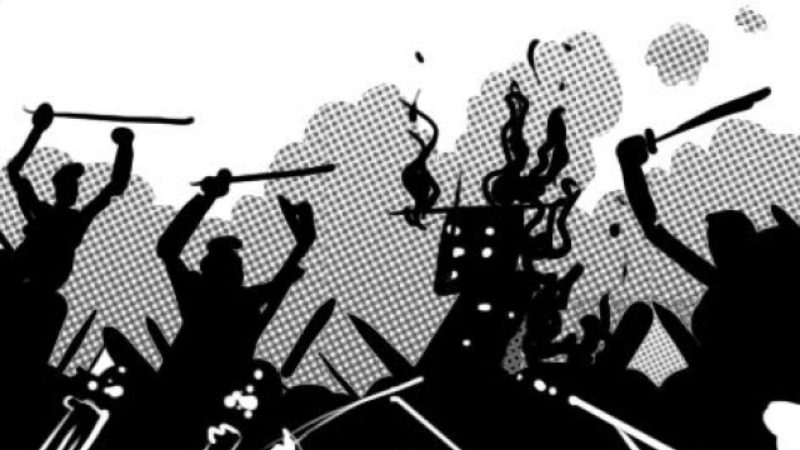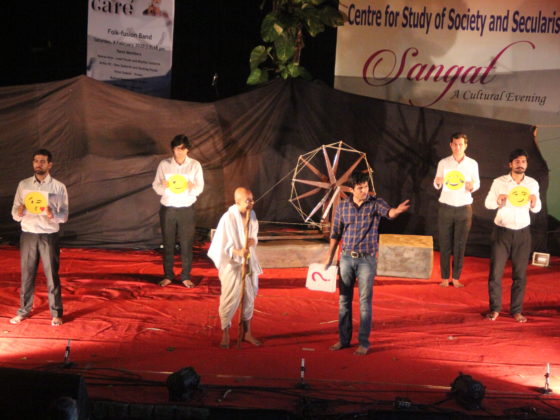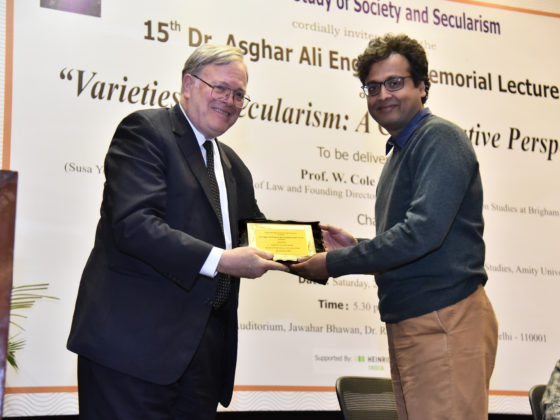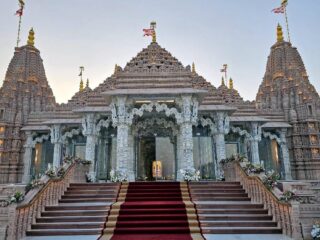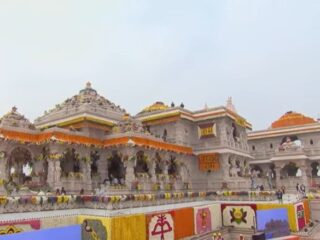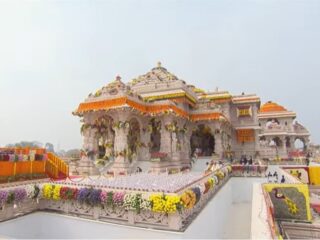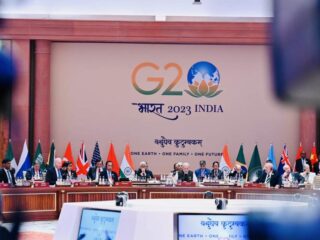Irfan Engineer, Neha Dabhade, Suraj Nair
(Secular Perspective Feb.16-29, 2020)
Tabrez Ansari, a 24 years old youth in Jharkhand, accused of a bike theft pleaded for his life even as he chanted “Jai Shri Ram” demanded by the mob that brutally lynched him. 25 years old Mohammad Barkat Aalam while returning home from namaz was assaulted and forced to chant “Jai Shri Ram” because he was wearing a skull cap. This very much sums up the story of mob lynching in India in 2019- mob lynching is taking place in India with alarming impunity. As compared to 84 incidents of mob lynching in 2018, in 2019, there were a total of 107 incidents of mob lynching in India. These incidents claimed 68 lives and injured 120. Out of 68 dead, 38 were reported as Hindus and 8 Muslims. The religion of 21 dead was not specified. Out of these 107 incidents of mob lynching, 18 took place over cow/ beef related issues, 2 over inter-religious relationships, 41 over child lifting, 14 over theft and significantly 16 incidents over demands of chanting “Jai Shri Ram” signifying the centre stage assumed by hegemony of supremacist ideology in mob lynching. The numbers are arrived from the monitoring of Centre for Study of Society and Secularism of Mumbai editions of three newspapers, The Indian Express, The Times of India, The Hindu.
The year 2018 was replete with heart wrenching incidents of mob lynching over suspicions and accusations of cow slaughter, consumption or smuggle. However, 2019 there was a marked shift in the discourse on lynching to demonstration of naked power and intimidation by right wing supremacists- now they didn’t need a pretext of beef or “love jihad”, merely demanding chanting of Jai Shri Ram was a litmus test enough to prove nationalism and assert ideology. Jai Shri Ram became a war cry, a tool to harass and assault the Muslims, unapologetically, merely due to their religious identity. Despite of the high numbers of incidents of mob lynching reported in the newspapers and public outrage evoked owing to the sheer brutality, the government delayed publishing the detailed numbers of mob lynching stating it doesn’t maintain such data (Indian Express, 2019). In its report on Mob Lynching in 2019, CSSS had drawn obvious connections between the spate of incidents of mob lynching attributed to child lifting and communal narratives. Though child lifting and theft are reasons that have emerged out of a communal discourse and having linkages, in this report like the last, CSSS will focus in detail on incidents which directly signify communal undercurrents, namely accusations of beef, inter-religious relationships, assertion of Hindu nationalism through chants of Jai Shri Ram.
Geographical mapping of mob lynching:
The North zone of the country reported highest number of mob lynching incidents- a total of 40. Out of these 20 took place in Uttar Pradesh alone. Uttar Pradesh also on the whole reported most number of mob lynching in the country. Uttar Pradesh was followed by West Bengal (14), Jharkhand (12), Bihar (12) and Maharashtra (11). Majority of the incidents in Uttar Pradesh were over child lifting- 11 incidents out of 20 incidents of mob lynching. Other incidents involved theft and Muslim youth lynched and demanded that they chant “Jai Shri Ram”. 18-year-old boy Mohammad Taj was allegedly beaten and forced to chant “Jai Shri Ram” after returning home from a madrasa at Usmanpur on his motorcycle. The incident occurred when four-to-five youths blocked his way, threw his skullcap to the group, and began to try to force him to chant “Jai Shri Ram.” In another incident in the state, four madrassa students were injured after they were battered with a cricket bat by four youths who trooped into the Government Inter College grounds in Unnao. One of the accused, Kranti Singh is appointed as the district secretary of the Bharatiya Janata Yuva Morcha (BJYM) — the BJP’s youth wing. In a separate incident, 30-year-old Muslim cleric was allegedly beaten up and forced to chant ‘Jai Shri Ram’ near Sarora village on Meerut-Karnal highway in Baghpat.
The north traditionally has been a site of communal riots. Highest number of mob lynching too is reported from the north. However, north is followed by the western India in terms of communal riots. The trend is a different as far as mob lynching is concerned. North is followed by East. Eastern India consisting of Bihar, West Bengal, Jharkhand and Odisha reported 38 incidents. Jharkhand alone reported 12 incidents. 14 incidents were reported from West Bengal- 11 of child lifting. In one of the incidents reported from Kolkata, West Bengal, three persons were assaulted and thrown off the train after they refused to chant “Jai Shri Ram”. Northeastern India consisting of the seven sister states reported 8 incidents of mob lynching. Out of these 8 incidents, three incidents involved issues of beef/ cattle. One Adivasi, 36-year-old Budhdhiram from Tripura was lynched by a group of villagers following allegations that he had been trying to “lift cattle”. 68-year-old Shaukat Ali was assaulted and beaten by a mob at Biswanath Chariali, Assam upon knowing that he served beef in his restaurant. He was asked if he serves beef in his restaurant and when he answered in the affirmative, a group of youths came to his outlet a few hours later and damaged his property while also assaulting him. Ali was then forced to eat beef and recorded doing so. The lessee of the market was also attacked. Although there is no ban on the sale or consumption of beef in the state, Ali was attacked, forced to declare his nationality, questioned about being Bangladeshi, and asked whether he was in the National Register of Citizens
In one incident in Barpeta, Assam, a group of Muslim men was assaulted and forced to chant “Jai Shri Ram,” “Bharat Mata ki jai,” and “Pakistan Murdabad.” One accused included, 30-year-old Debojit Deka, is a member of the right-wing Sri Ram Sena. These incidents indicate that communal violence in the form of mob lynching is taking roots in the Northeastern India too where very recently ethnic violence was prominent. But now communal violence is gaining prominence over issues like cow/ beef which is very much part of the diet in North East. Assam in particular is volatile given the polarization and divisive discourse contributed by NRC. In short, communal violence through the medium of mob lynching and the issues it exploits is penetrating areas hitherto not so affected by communal violence going beyond the “traditional” places. The effects are a debilitating communal discourse which is strengthened which normalizes targeting of innocent individuals owing to communal identities and impeccable impunity to the perpetrating supremacists.
Mob Lynching: Triggers
In 2019 like in 2018, the cases of mob lynching triggered due to suspicions of child lifting have been the highest. 41 incidents were reported of child lifting. This was followed by 16 incidents involved demanding the victims to chant slogans which symbolize power of supremacist ideology. This is an alarming development reflecting an increasingly lawlessness in the society encouraged by the establishment to assert domination. 13 mob lynching took place over the issue of cow vigilantism. 11 mob lynching took place over the suspicion of theft. This included the case of Tabrez Ansari. In 2018, 41 incidents involved child lifting, 16 cases of cow vigilantism, 9 cases of inter-religious relationships and 8 of theft attempt.
Only two incidents took place under the pretext of inter-religious relationships. In Saharanpur district of UP, one Muslim youth was lynched given his relationship with a woman from another community. The second lynching over inter-religious relationship took place in the Bharuch district of Gujarat where a Muslim youth was lynched due to his relationship with a tribal girl. Clearly, the triggers of mob lynching have changed though child lifting suspicions still persist. But the supremacists don’t need a trigger anymore based on beef or inter-religious relationships in the past which they made out to be signposts of being anti-national and thus accorded it legitimacy. In 2019, Jai shri ram was a war cry reflecting power drunk arrogance of the establishment and all the non-state actors it encouraged and emboldened.
Role of State:
The role of the state has been that of patronage and granting impunity to the Hindu supremacists which carry out divisive agenda. Mob lynching is allowed to take place unabated. It is used as a tool to demonstrate the hegemony of the ruling ideology and also re-assert the marginal second class status of the Muslims, Adivasis and the Dalits. The complicity of the state can be witnessed at different levels in mob lynching.
Patronage:
The government is emboldening right wing organizations by its lack of punitive action against them. Also the supremacist organizations take cue from the hate speeches delivered by those in power who again go unpunished. These instigations through the hate speeches translate into hate crimes like lynching. Two Kashmiri students studying at a college in Yavatmal city were allegedly assaulted by a group of youths and were forced to say, ‘Vande Mataram’ and ‘Bharat Mata Ki Jai’. The duo was accosted by a group of youths led by district Yuva Sena vice President Ajinkya Motke and were repeatedly slapped. The accused even video recorded the whole incident and then uploaded on Motke’s Facebook page. This action comes on the heels of the Pulwama attack and how the Kashmiris are framed as anti-nationals. This rhetoric is repeated in hate speeches by the state officials sworn by the Constitution.
Apart from the incident in the above paragraph and others mentioned, there are few other where the members of right wing organizations can be seen fearlessly lynching the vulnerable. In Seoni district of Madhya Pradesh, three people, including a woman, were beaten by a group of cow vigilantes over their suspected carrying of beef. The victims were forced to chant Jai Shri Ram. One of the accused is a self-professed member of Shri Ram Sena. In another incident, a Kalyan resident in Mumbai was threatened a garage owner with a knife and manhandled him when the victim refused to chant Jai Shri Ram and Jai Bajrang Bali. Upon his refusal to chant, the accused declared the victim as anti-national. The accused is associated with Bajrang Dal.
Police protecting the perpetrators:
The police have been partial and complicit in lynching in most of the cases. The two starkest cases have been the Tabrez Ansari case where he was tied to a pole for around 12 hours and beaten mercilessly by a jeering crowd which was laughing. The police did nothing to rescue him. The police instead of giving him immediate medical attention took him to the doctor only after two days. This delay cost Tabrez his life. The police initially made a case of cardiac arrest and dropped serious murder charges against the accused thereby attempting to dilute the case. However, eventually due to fresh forensic report, the case includes murder charges since it was proven that Ansari died due to his injuries. Similarly, in the case of Prakash Lakra, the mob of Sahu members of Jairagi village in Jharkhand were beating Prakash Lakra and three others all evening on the suspicion of skinning a cow. The mob itself brought Lakra and other victims to the shed outside the police station. The police took the victims only at 4am to the hospital which was less than two kilometers from the police station! Prakash Lakra was brought to the hospital after the other victims and was declared brought dead. While the accused in the case are roaming free, the other surviving victims are slapped with stringent anti-cow slaughter laws. This lack of action by the police is not uncommon. The police have been found being mere spectators or even aided the culprits in most cases.
Criminal Justice system:
The criminal justice system has failed to stop or deter the culprits from mob lynching. The miscarriage of justice begins with no serious stringent charges slapped against the culprits leaving them out of the net of law. This translates into lesser arrests and easy acquittal in the courts of laws since there is little evidence furnished by the police. Since the incidents of lynching over child lifting is spiraling out of control and also victimizing members of the Hindu community, there is political will to stop the incidents. Thus, predictably there are 129 arrests in these incidents. On the other hand, in the cases of cow vigilantism, there were a mere 18 arrests, including those of the victims themselves under cow protection laws, from the newspaper reports. Interestingly, the police in almost all cases where the victim was compelled to chant Jai Shri Ram denied any communal angle to the incidents and insisted that the incidents arose out of “altercation”. This is a refusal to acknowledge the targeting of individuals by asserting a political ideology.
Conclusion:
CSSS has observed that mob lynching is a form of communal violence. While the number of communal riots reported has reduced, communal violence is expanding its footprint through mob lynching. In spite of the guidelines of the Supreme Court, which emanate from its acknowledgement of this heinous crime, to deal with this dehumanizing menace, the number of mob lynching reported has increased. This is possible owing to the instrumental use of the lynching to exercise control, demonstrate power and marginalize the Muslims, Adivasis and Dalits. The result is a society which is fractured along lines of religion, hate filled, spiraling into unending violence, lawlessness and morbid collective which is an anathema to a democracy. Though the political landscape of India is fast changing with discriminating legislations and resistance, mob lynching has been a reality to deal with. This reality doesn’t just haunt and scar the survivors of mob lynching and their families but also the moral conscience of India. Or at least one expects that it should have.
————————————————————-
Centre for Study of Society and Secularism
Mumbai.

